Today’s blog ventures back to 1901 to tell the story of the murder of Annie Austin, who was murdered in Dorset Street, Spitalfields on the 26th of May of that year.
A REPUTATION FOR VICE AND VILLAINY
Dorset Street in Spitalfields had a dreadful reputation for vice and villainy in the closing years of the 19th century and on into the early years of the 20th century. Indeed, so bad were its inhabitants considered that it was often referred to as “The Worst Street In London.”
It was in Miller’s Court, an arched passage leading off Dorset Street, that Mary Kelly – whom many consider to have been the last of Jack the Ripper’s victims – was murdered on the 9th of November 1888.
In the years that followed the brutal killing of Mary Kelly, several other such crimes occurred in and around Dorset Street – so much so that, by the early 20th century this, otherwise unremarkable, London thoroughfare could well have been described as East London’s murder central.
A DESCRIPTION OF DORSET STREET
The St James’s Gazette presented its readers with a description of Dorset Street and its inhabitants in its edition of Tuesday 26th May 1901:-
“Dorset-street, Spitalfields…is a narrow thoroughfare containing a few dingy shops and a number of common lodging-houses, frequented by some of the poorest inhabitants of Whitechapel.
Almost deserted during the day, the street presents at night an appearance of extraordinary activity.
Hundreds of men and women of all nationalities avail themselves of the cheap accommodation offered by the lodging-houses, while the penniless denizens of the district sleep in the gutters and doorways undisturbed by the authorities.”
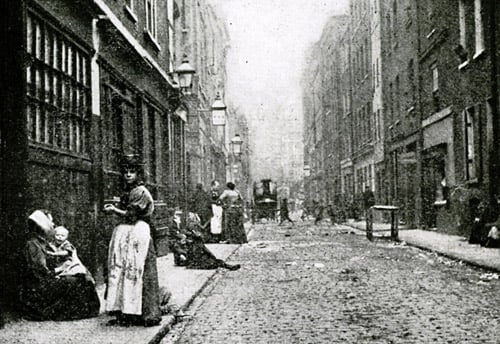
ANNIE AUSTIN’S MURDER SUNDAY 26TH MAY 1901
One of several murders that occurred in Dorset Street was that of Mary Annie Austin, whose body was found in a cubicle at a common lodging house at 35 Dorset Street – coincidentally the same lodging house at which Jack the Ripper victim Annie Chapman had been living prior to her murder – on Sunday 26th of May 1901.
The Gloucester Journal published a report on the murder in its edition dated 1st of June 1901:-
MURDER IN A WHITECHAPEL LODGING HOUSE
“Within a stone’s throw of the house in which Mary Kelly was murdered and mutilated in November, 1888, when police and public alike were staggered by the extraordinary series of atrocities known as the Ripper murders, a tragedy of a somewhat similar character occurred in the early hours of Sunday morning.
Dorset-street, Spitalfields, the scene of the murder, consists of dingy shops and common lodging-houses frequented by the poorest subjects of Whitechapel.
At present the police are mystified by the peculiar circumstances surrounding the tragedy.
The cosmopolitan character, too, of the population makes the work of investigation all the more trying.
It is clear, however, that on Saturday night a woman named Annie Austin, aged 28, with an unknown man, occupied a cubicle at 37, Dorset-street. [Although the newspaper reported it as 37, Dorset Street, the lodging house was, in fact, 35 Dorset Street.]

FOUND SUFFERING FROM WOUNDS
On Sunday morning the woman was found alone, suffering from wounds in the lower part of the body, too revolting to describe, and evidently inflicted by a sharp instrument.
She was removed to London Hospital and died early on Monday morning.
The police only became aware of the murder through the hospital authorities, and the criminal thus obtained several hours start before the work of investigation commenced.”
HER HUSBAND’S INQUEST TESTIMONY
The inquest into the death of Annie Austin, presided over by Coroner Wynne Baxter, opened on the 29th May 1901.
William Austin, who described himself as a stoker, testified that he had identified the body of the deceased at the mortuary as being that of his estranged wife, Mary Annie Austin, aged 28, to whom he had been married for eight years.
They had three children, two of which were living.
Owing to a lack of work he had been compelled to break the family home up twelve months previous, and since then he and his family had had no fixed abode.
Having lived at various localities, he and his wife had gravitated to Dorset Street, where they had spent three months living at Mrs McCarthy’s lodging house.
However, his wife had “given way to drink”, which had led to them quarrelling and, as a result, they had recently separated.
She had, he said, told him that she could do better by herself, and he had agreed to “give it a trial.”
His wife, he testified, “was connected with a lot of men in a public house in Dorset Street, mostly navvies.”
Following their separation, he had gone to Battersea and had, he said, spent the night of the murder sleeping in a van there, although he had found it cold and had, therefore, woken early and had walked around to keep warm. He testified that he had been on Battersea Bridge at half-past five on the Sunday morning.
The last time he had gone to Dorset Street was on the Thursday prior to his wife’s murder. On making enquiries after his estranged spouse he learnt that Mrs McCarthy had “got tired of his wife and had slung her out on the previous Saturday night.”
The first he knew of the murder was on the Tuesday morning, when he had read about it in a newspaper and, suspecting the victim to be his wife, he had made enquiries at Battersea Police Station and had subsequently identified her at the mortuary.
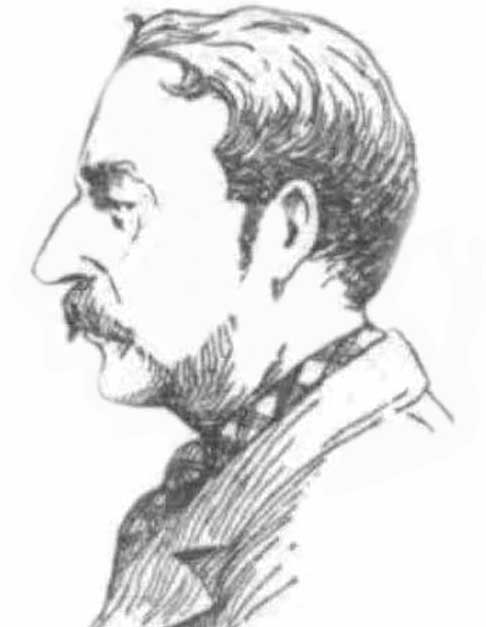
HENRY MOORE’S INQUEST TESTIMONY
The next witness to give evidence was Henry Moore, the deputy keeper of the lodging house, who stated that the lodging house contained 55 double and four single beds, and that the first floor was separated into a number of cubicles with partitions, that did not go up to the ceiling.
At about ten o’clock on the Saturday night, the deceased woman had arrived at the lodging house in the company of a man. They had paid eighteen pence for a bed, and his wife, Mrs Moore, had shown them to cubicle 44 of the lodging house.
He had, he testified, never seen either the man or the woman before and he would not be able to describe them, although he was certain that both of them had been sober when he admitted them.
He had, on two occasions, gone over the house during the night, and had found all the occupants to be quiet and orderly. Significantly, he had heard “no cry of distress during the night.”
The gate in the hall was locked at night and was not opened till a quarter to six in the morning.
He was emphatic that, up until that time, no-one had left the building.
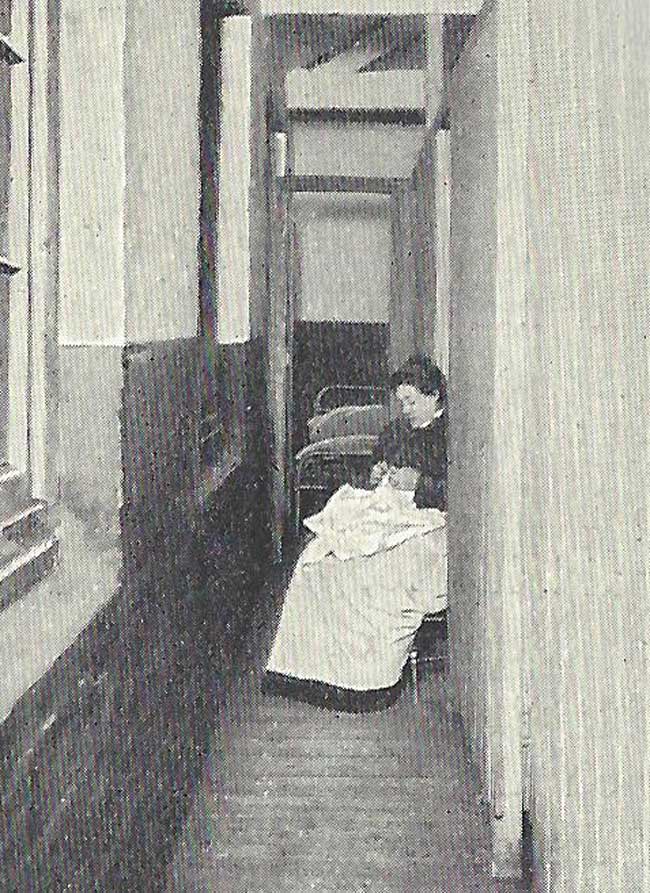
A WOMAN HAD BEEN SERIOUSLY INJURED
It was between eight and nine a.m., he said, that a regular lodger, by the name of Frances Davies, had informed him that, “the woman, Austin had been seriously injured.”
When his wife had ascertained the nature of the woman’s injuries he had gone immediately to fetch a doctor.
At this point in his testimony the Coroner, Wynne Baxter, intervened and asked him, “Why didn’t you send for the police? You knew that a serious crime had been committed in your house.” “I didn’t think it necessary,” Moore replied, adding, “the doctor said nothing abut it.”
BAXTER WAS NOT IMPRESSED
Coroner Baxter was, so it appears, growing a little incredulous at Henry Moore’s testimony, and he duly subjected him to a further grilling:-
“Did you know if you had sent to the hospital an ambulance would have been supplied?”
“No, Sir.” Was Moore’s reply, “I paid the cabman 2s.”
“What other steps did you take?” Enquired the Coroner.
“No other steps,” came the reply.
“You had got rid of her,” snapped the Coroner.
“I informed the manager at night, and he told me I ought to have informed the police,” was Moore’s defence.
But Baxter wasn’t finished with this witness yet.
“This woman has been living in your street for months, and yet you say that you never saw her before?”
“No, sir.”
No doubt Henry Moore was somewhat relieved when he was finally allowed to step out of the witness box.
MRS MOORE’S TESTIMONY
The next witness to appear was Mrs Moore who backed up her husband’s claim that, when the deceased and the man had applied for the bed on the Saturday night, they were both sober.
She could not, she said, describe them, and she was emphatic that she had heard no cry for help during the night.
According to the Daily News:-
“She gave a graphic description of the scene in the cubicle when she visited it on Sunday morning and found the deceased moaning and groaning.
She did not accompany the woman to the hospital, neither did she think it necessary to inform the police that a brutal crime had been committed.”
At this point Coroner Baxter intervened to express his disquiet at the way the woman had been treated.
“It has been stated that this woman was put into the cab like a bundle of rags and sent to the hospital?”
Mrs Moore, though, was having none of it:- “She was carefully carried downstairs and put into the cab.”
Abandoning his interrogatory line of enquiry, Coroner Baxter asked her to describe the man who had arrived at the lodging house with the deceased.
Mrs Moore replied that he appeared “to be about 40, and had a dark complexion. He did not appear to be a foreigner”.
So saying, Mrs Moore, stepped down from the witness box.

THE TESTIMONY OF FRANCES DAVIES
Frances Davies, who gave her occupation as laundress, then stepped into the witness box.
She told the inquest that she had lodged at 35 Dorset Street for several weeks.
When she got up at around eight o’clock on the Sunday morning she had heard groans coming from cubicle 44 and, on investigating further, she had found a woman who was evidently in a great deal of pain.
The woman, so the Daily News reported on the 30th May 1901:-
“…complained that she had been stabbed in the lower region of the body and, on closer examination, she found abundant proof that such was the case. The bedclothes were disarranged and she thought there had been a struggle. She gave the alarm, and a doctor was sent for. During the night she heard no disturbance or any cry for help. She asked Austin who had so seriously injured her, and she simply said – a man.”
DR DALE’S TESTIMONY
The next witness was Dr. Dale, who deposed that he had been called to the lodging house at around 8.30 a.m on the Sunday morning. When he examined the deceased he had noticed several deep cuts on her body and had, therefore, given instructions that she was to be taken to the nearest hospital.
He had asked her who was responsible for the wounds, to which she replied that she had been stabbed by a man who had accompanied her to the lodging house the previous night. She told the doctor that the man had inflicted the injuries whilst she was sleeping. She also told him that the man was a stranger to her.
The doctor then went on to contradict Henry Moore’s testimony when he informed the inquest that he distinctly remembered telling the deputy manager that he must communicate with the police, as the woman had been very seriously injured.
At this point Coroner Baxter interjected:- “As a matter of fact the police didn’t know anything of the occurrence till about 36 hours afterwards.”
Having, once again, expressed his displeasure at the delay in informing the police, Baxter enquired of the doctor:-
“Do you think it possible that the woman could have received the injuries you have described and not have called out?”
To which the doctor replied:-
“The only explanation I have is that she was very drunk, and, this being so, it is quite possible she received the injuries without calling out.”
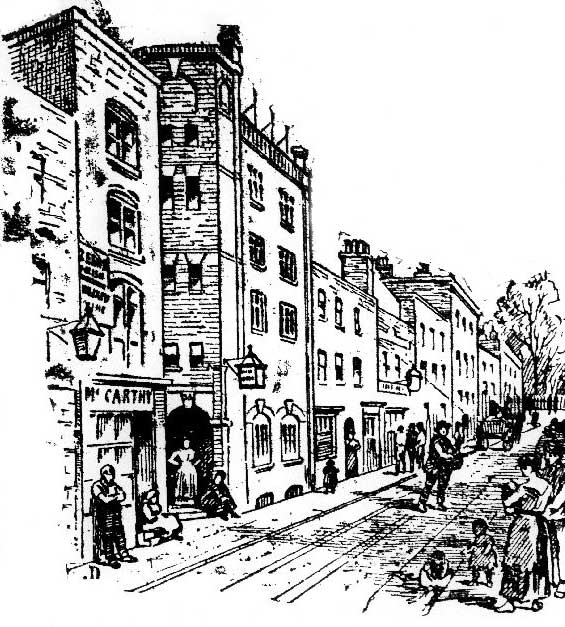
DR EDWIN RIDGE’S TESTIMONY
The next witness to give evidence at the inquest was Dr. Edwin Ridge, acting house-physician at the London Hospital.
The Sunderland Daily Echo and Shipping Gazette reported his testimony on the 30th May 1901:-
“The deceased was admitted into the hospital at 35 minutes past nine on Sunday morning. He saw here at quarter-past 10,
when making his rounds.
She was then unconscious, but, not thinking her condition very serious, he did not examine her further.
At nine o’clock the same evening she was placed under an anaesthetic, and her injuries examined.
He found 10 deep cuts about the body, the deepest being about half an inch.
When she recovered consciousness, the deceased said that a man had inflicted her injuries. and that she had met him in the street.
She described him as being not very tall, with dark hair and a dark moustache, and no whiskers nor beard. She thought from his appearance that he was a Jew.
When asked how she was attacked, the deceased replied:- “I don’t know. I was suddenly woken up by a sharp pain, as if a knife had been run into me. I screamed out, and found the bed full of blood. When he saw what he had done he ran out.”
A Juryman said that it was a shame that the woman should have been allowed to remain in the hospital for so long without being seen by one of the medical attendants.
At this point the inquiry was adjourned.”
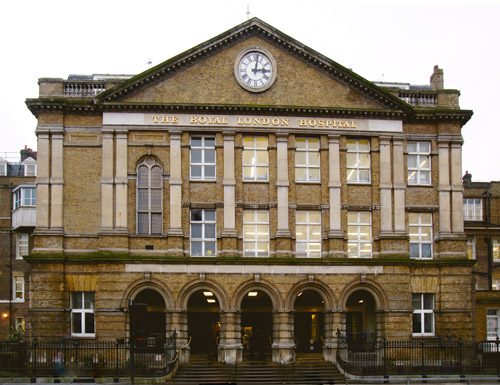
THE MYSTERY MAN RECOGNISED
Evidently the Coroner, Wynne Baxter, had grave reservations about the veracity of some of the witnesses who had appeared before him in the course of the inquest into the death of Annie Austin.
However, one of those witnesses believed that she recognised the mysterious man who had accompanied Annie to the cubicle on the night prior to her murder and, as a result, the police were about to make a surprise arrest.
You can read about this arrest in the next instalment.
